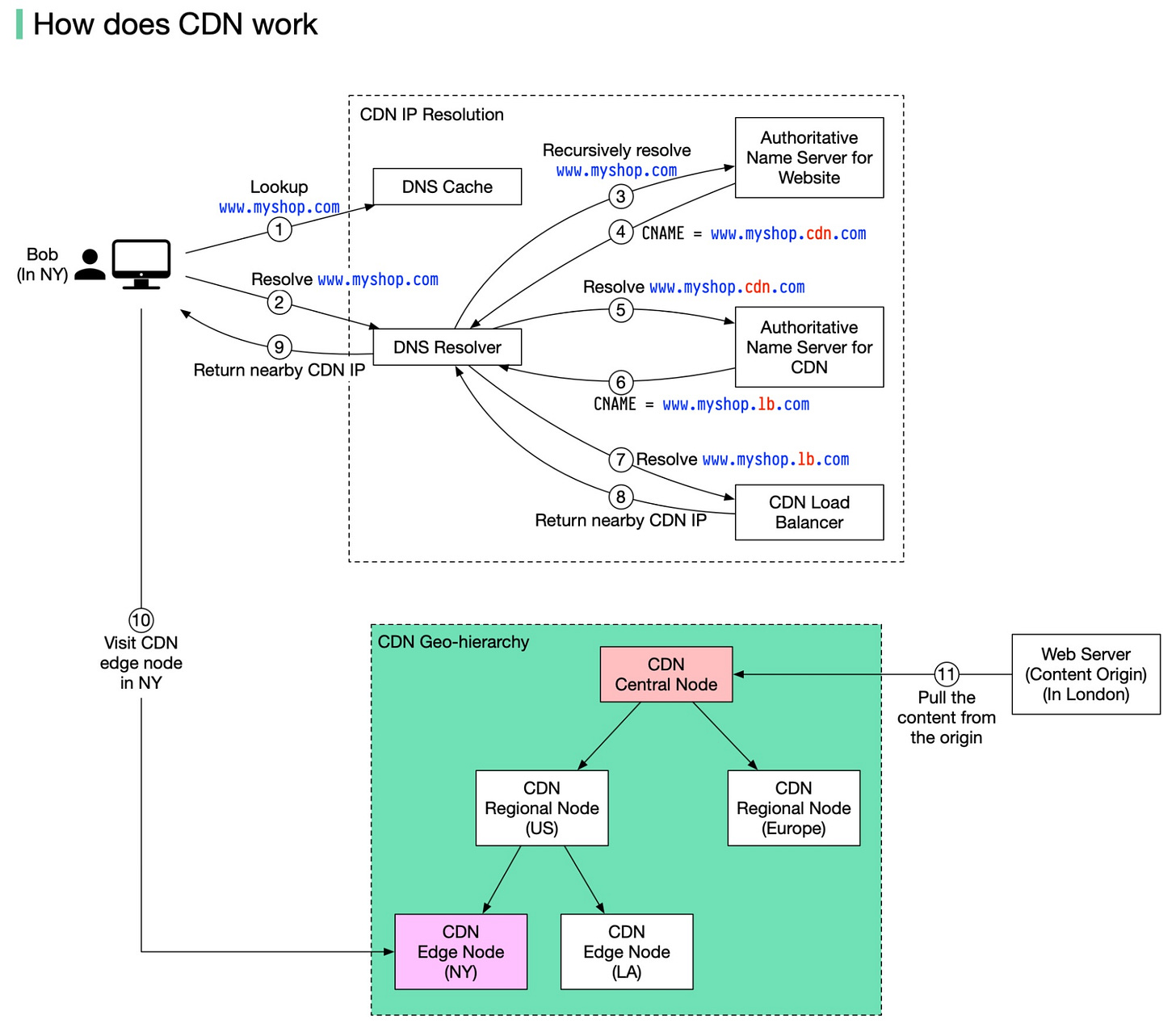A Crash Course on Content-Delivery Networks (CDN)
In the era of the modern web, latency can directly impact an organization’s bottom line.
Here are some stats from a study by Portent:
A page that loads in 1 second has a 3x higher conversion rate than a page that takes 5 seconds to load.
E-commerce conversion rates decrease by 0.3% for every second of load time.
The optimal loading time to maximize sales is less than 2 seconds.
One of the most effective strategies to reduce latency is using a Content-Delivery Network or a CDN.
A CDN is a geographically distributed network of servers that work together to deliver fast and reliable content delivery across the globe.
When a user requests content from a website or application that uses a CDN, the request is redirected to the nearest CDN server, which serves the content to the user. This reduces the distance data travels and improves overall performance.
Think of a CDN like an ATM. If money were available only from one bank branch in town, everyone would have to make a time-consuming trip to that branch. With ATMs in every locality, everyone has fast and easy access to money.
The market size for CDN-related solutions is expected to reach nearly $38 billion by 2028, with companies like Akamai, Cloudflare, and Amazon CloudFront investing heavily in improving their CDN offerings.




